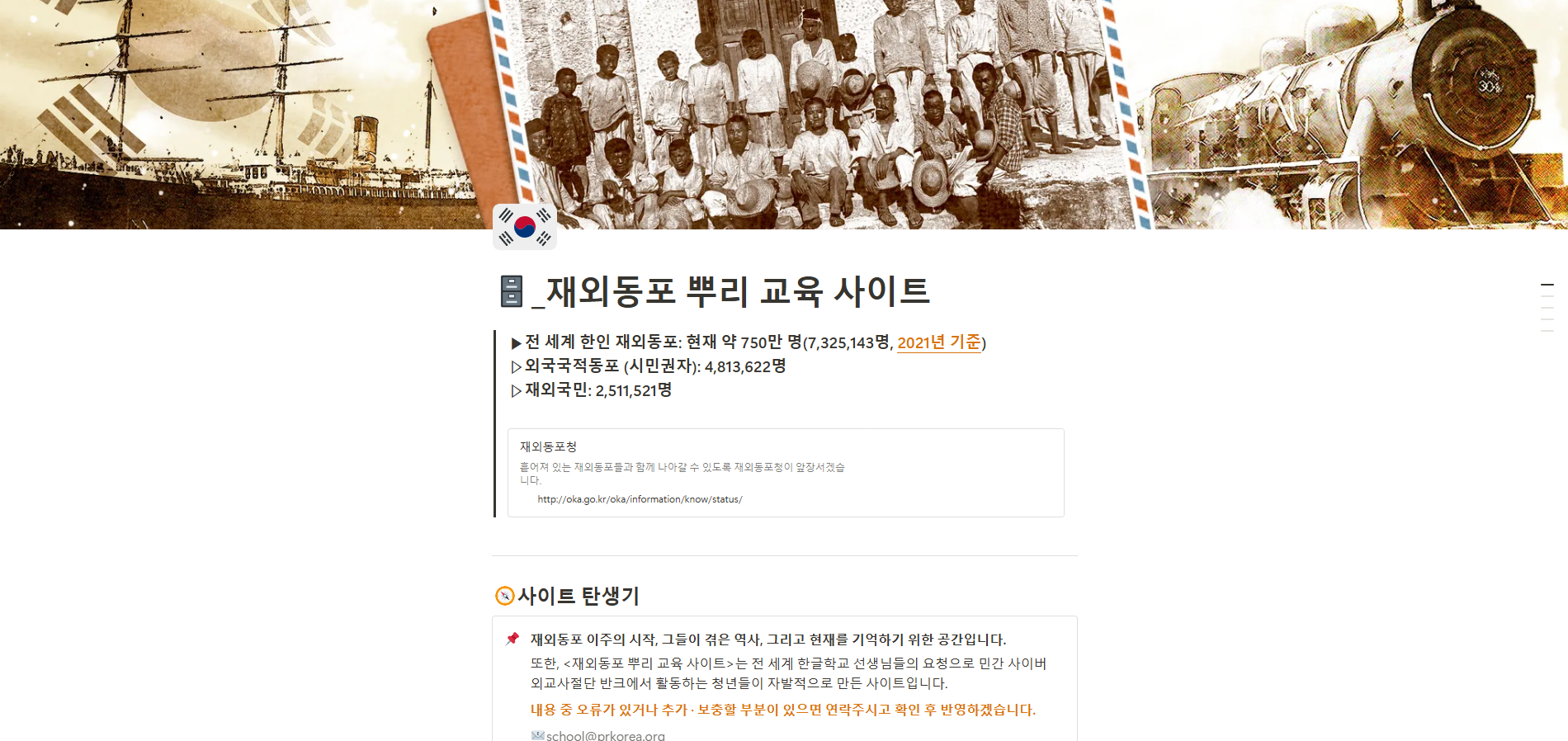
The global diaspora of Koreans, or overseas Koreans, is estimated to number approximately 7.5 million, which constitutes about 15% of South Korea’s total population. Despite this substantial number, many citizens still do not fully appreciate the significance of overseas Koreans and their contributions, and there is a lack of content that effectively communicates this importance.
In response, VANK has established an online root education site aimed at properly educating people about the history of Korean immigration abroad.
Overseas Koreans Root Education Site
prkorea.com/all-koreans
The newly launched site serves as a space to learn about the origins of Korean immigration, the struggles faced by overseas Koreans, and the ongoing legacy of their experiences. The site aims to educate users on the history of Korean migration and the historical events that have shaped the lives of Koreans living abroad.
The Definitions section provides clear explanations of terms such as “overseas Koreans,” “overseas nationals,” and “foreign nationals of Korean descent,” addressing the confusion that often arises when using these various terms in different contexts.
The Immigration History section outlines the timeline of Korean immigration, beginning with the first recorded instance of Koreans living outside of the country in the 1860s. It highlights the mass migration that began in the mid-19th century, noting that while the history of Korean diaspora is relatively short compared to other ethnic groups, few have adapted to such a wide range of political and economic systems as the Korean people have.
The site is organized into two main sections: Korean Diaspora History by Continent and Additional Learning: Jewish People. The Korean Diaspora History by Continent section covers key countries in each of the five continents where Koreans have immigrated, documenting historical events, Korean organizations, independence activists, stories of the diaspora, key settlement areas, and notable figures.
For North and Central America, the site starts with the story of Korean migration to Hawaii, marking the beginning of Korea’s first official immigration project. This year marks the 120th anniversary of the Hawaii migration. The site also covers significant stories from the United States, Canada, Mexico, and Cuba, focusing on the hardships faced by Korean laborers in places like Mexico, who endured difficult working conditions but maintained their identities.
In South America, the site introduces lesser-known stories of Korean migration, beginning with Brazil, where the first official group migration occurred following the establishment of the Republic of Korea. The site also covers Chile and Peru, countries with relatively little interaction with South Korea.
The Asia section starts with the migration of Koreans to Manchuria and the Gando region in the 1860s. Due to the proximity and shared cultural similarities, there is a wealth of historical records related to Korean immigration in Asia.
In Europe, the site features stories of independence activists who fought for Korea’s independence abroad, as well as accounts of migrant workers and students. It also highlights significant Korean cultural heritage, including the discovery of important historical artifacts like the Oegyujanggak Uigwe and the contributions of scholar Park Byeong-seon in introducing Jikji.
The Oceania section covers the stories of countries that participated in the Korean War and the sacrifices made by veterans, without which the Republic of Korea may not exist today. It also includes the migration histories of current students and immigrants living in Oceania.
The Additional Learning: Jewish People section provides an overview of the Jewish people, who are considered leaders in building overseas ethnic networks. This section begins with a definition of the Jewish “ethnicity” and briefly covers their history of oppression.
VANK plans to promote this newly established online resource as a tool for identity and root education for overseas Koreans around the world. It aims to expand and improve the site with the active participation of overseas Koreans.
The site will be especially beneficial for young overseas Koreans, helping them understand the significance of their historical roots and fostering pride in their Korean identity as well as their global citizenship. With the recent passing of legislation in California requiring “Ethnic Studies” as a high school graduation requirement, and the increasing opportunities for Korean-American youth to learn about their history, this site is expected to play a crucial role in the root education process.